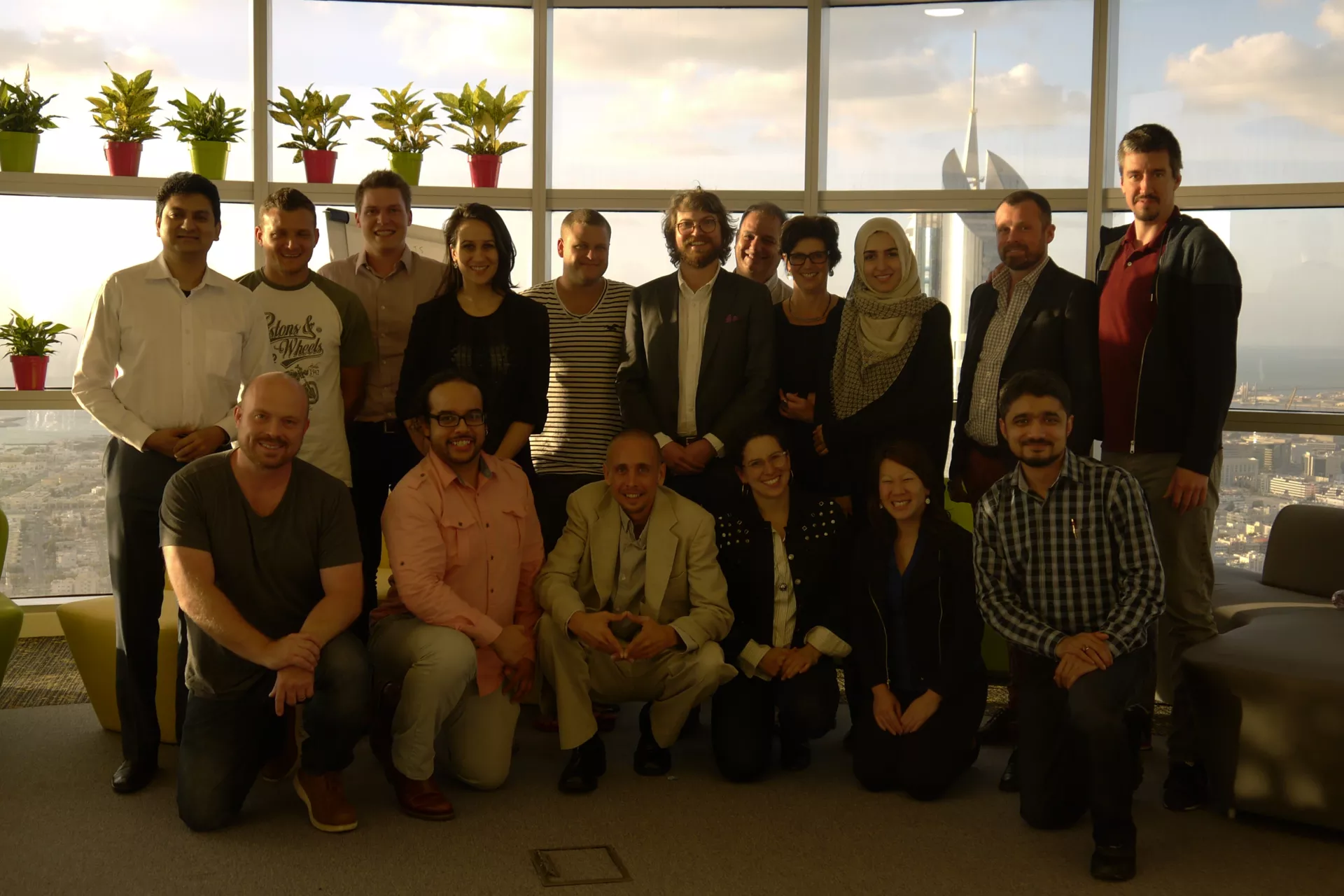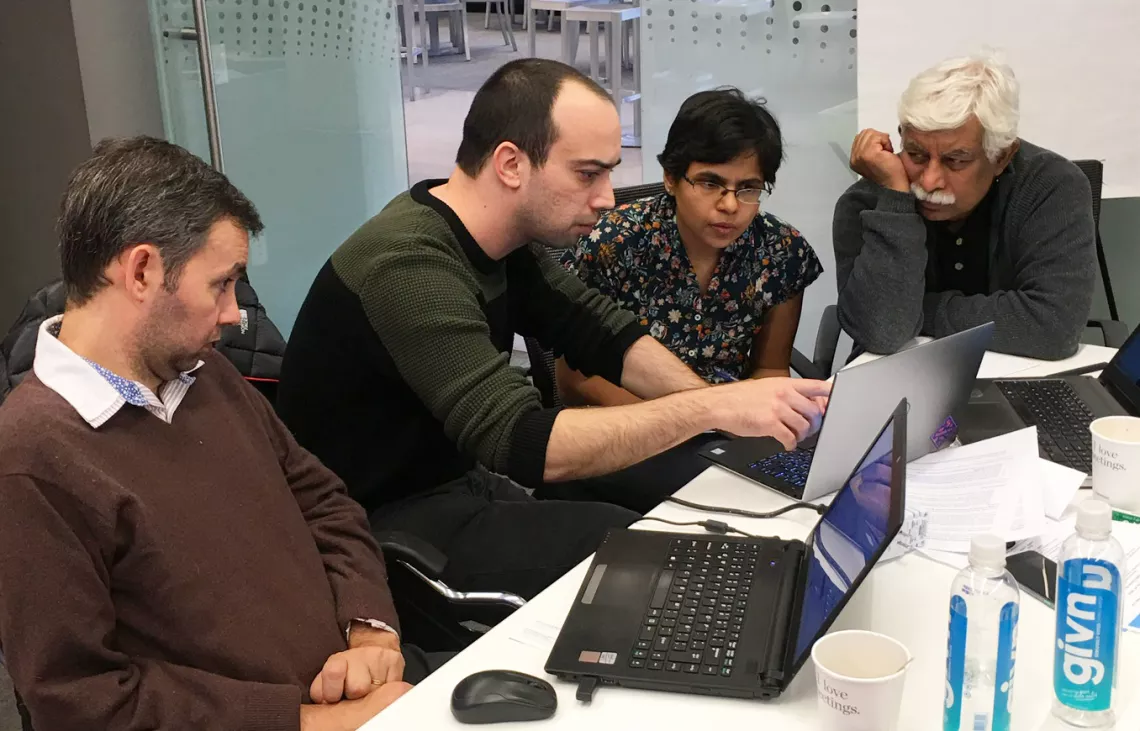One Year on with the Innovation Fund
Presenting our First Graduating Class

One year on (ok, more like 15 months) from funding seed rounds for our first five portfolio companies, we have succeeded, failed and above all learned like any early-stage start-up. UNICEF’s Innovation Fund is proud to see its first investments ‘graduate’ from our portfolio.
How did we fare?
We invested in (male) communities
As any venture capital fund, we expected most of our ventures to fail. Hard. Gloriously. The first portfolio didn’t quite meet our expectations – the companies have built out their systems and teams, the teams have (largely) stuck it out and have all made progress in developing their open source products further.
However, the face of our community of problem solvers is mostly male. With only 1 female co-founder in the first cohort, we are actually above average (!) – globally only 6% of VC funding goes to female-founded companies, but in this case average = big fail. This is a failure of the Fund and also of our companies – to sufficiently diversify our portfolio and the teams.
Diversity doesn’t just happen. While we actively create a diverse team at UNICEF Ventures, we didn’t place enough emphasis on this in our assessment of start-ups. This is changing in 2018.
Watch this space, as we have set to change the face of our investments by the end of this year.
We grew the pool of open source technology solutions from emerging markets – a bit
Our five graduates have published their source code and content publicly and are actively looking for contributors and users of their solution. Check these out to find out more:
-
Rah-e-maa: https://github.com/csaltItu
- Somleng: https://github.com/somleng
- Saycel: https://github.com/saycel
- Trustlab: https://github.com/TrustlabTech
- mPower: https://github.com/OpenSRP/opensrp-client-bangladesh
Open source business models can make good business but it still remains a struggle for us to explain how. Our five graduates have had varying success monetising their solutions, focusing largely on product development and to a lesser extent on acquiring customers and generating revenue. Rah-e-maa for instance is now looking into various strategies to convert their 16,000 users into revenue for their project. Somleng has started defining and valuing the value-add and customisation services the team provides to customers who want to deploy their IVR platform. TrustLab is launching a crypto token to generate income for its protocol that will be applied to verifying impact data across different sectors. But none of them have reached the place of financial sustainability – yet.
Being open source brings advantages for business – open source companies for instance secure average acquisition prices aboutt 4%above prices than the average proprietary company. Also, development costs are lower when a broad community contributes and monitors code. However, these benefits are only converted into value when an open source community is created, managed and maintained around a product. We are making more investments on our team to better support them to really benefit from being open source.
We need to do better at guiding future and current companies towards pathways to profit. In addition to a strong team of mentors (thanks to our current group), the Innovation Fund is developing an online course to support future and current portfolio companies in their business model development. Coming your way in mid-2018. If you are running a profitable open source company and are willing to be interviewed for our course, ping us at venturefund [at] unicef [dot] org

But do the solutions actually work?
It looks like they do. And we’re one step closer to making connections with those who have so far been off the grid.
This first portfolio was diverse in their solutions – from companies building a hotline for illiterate fathers to creating smart contracts to track payments to community schools. We selected them from an open call for applications that called for companies developing open-source tech that could benefit children. By coincidence, a number of these first graduates all worked to improve digital infrastructure that improved connections for the most marginalised:
- Somleng’s IVR platform has generated 724,000 mins worth of calls and has shown significant cost savings (95%) compared to a similar solutions from the competition. As we are working to integrate Somleng with RapidPro, we expect that some UNICEF Country Offices around the world will be using Somleng to reach marginalised communities with important information over voice.
- SayCel’s WebPh.one platform, available on beta release, has provided 17 community cellular networks in Nicaragua and Mexico and five emergency mesh networks in New York City. 34,000+ minutes of calls have been conducted with an average of 44% savings compared to other networks.
- TrustLab’s Amply platform has digitised 54,000 attendance records during its pilot in South Africa, moving away from paper-based tracking systems that make it challenging to link attendance to government subsidies. The smart contract to link these records to financial transactions is ready for deployment.
- Rah-e-maa: was able to engage over 16,000 users on their platform in less than 2 months. With almost 31,000 calls registered, the team has successfully developed a service that users return to.
- mPower: have registered 2,700 children and over 22,000 vaccinations on their platform openSRP. Delays in vaccinations were cut in half in their pilot region.
– but really we need more data to show what these solutions can really do at scale and across different contexts. Luckily, these companies will continue to provide us with real-time data on https://unicefinnovationfund.org/#/all_projects for the next 12 months, so we will continue to keep an eye on their results.
While they were similar, their solutions were still different enough that made connections and joint scaling difficult. Relying on coincidence to make connections between our companies is just not very efficient (or effective). We are now onboarding cohorts of companies that are all working on similar underlying tech stack. This allows us to connect companies, provide more structured technical assistance and to jointly build and contribute to globally scalable platforms. We recently brought together our cohort of companies working on solutions for children with disabilities and are now looking to build a cohort of blockchain companies.

What happens now?
All five companies are actively looking for follow-on investments and partnerships to pilot their solutions and scale them to more users in their home countries and beyond. Find out more here about how to engage with each company. The UNICEF Innovation Fund is actively facilitating these connections – if you are interested in learning more about these solutions and partnering with these teams, please contact us. As for the fund, we’re gearing up to onboard another 20 this year – with a better well designed cohort model, selection criteria and access to a bigger community of mentors, experts and support.
Onward
Our graduates are all early-stage companies – as are we here at the Innovation Fund. Our graduates were our ‘first batch of pancakes’ and they showed great patience for our own process of prototyping, iteration and market testing. We thank them for their partnership over the last year.
If you would like to join the portfolio and receive equity-free seed funding from the UNICEF Innovation Fund, check out www.unicefinnovationfund.org/#/submit for our criteria and link to the application form.




